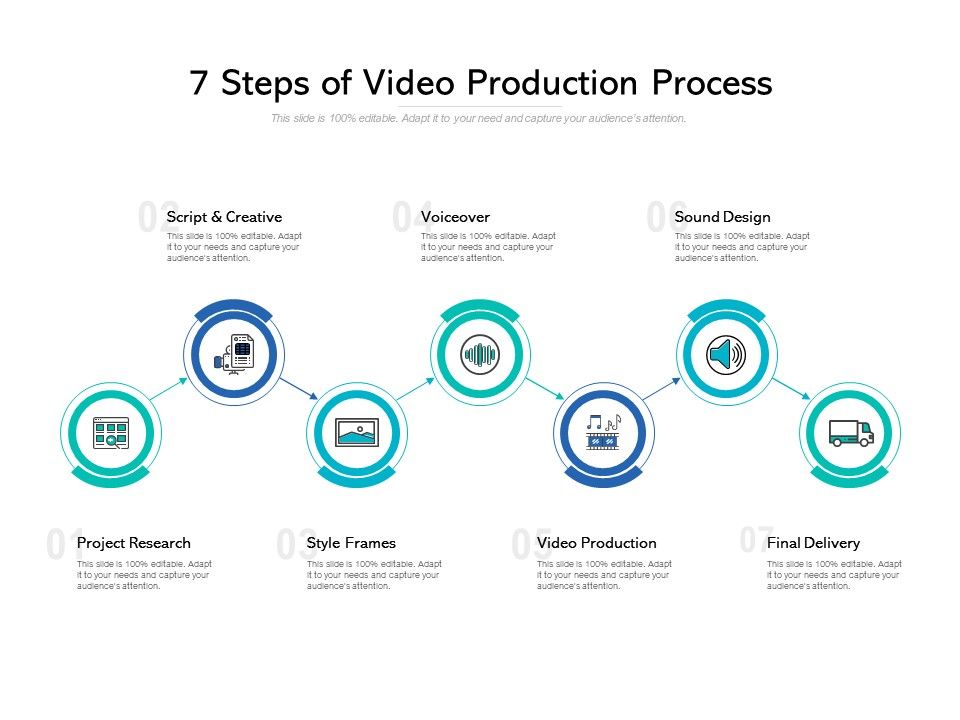

Your next step as a filmmaker will be to put together a rough draft or 'assembly edit’: a loose sequence intended to set the tone for the final product. Let’s fast forward now, to a time where you’ve got your raw footage and you’re ready to jump into editing. This will aid a smooth feedback process with even the most inexperienced clients. If you get the feeling your client needs things stripped back to basics as much as possible, then Vimeo’s video review feature is one to consider as well. You may prefer OneDrive, for example, but Google integrates better with the project management system they already have in place.
#Video production process software#
We‚Äôre talking key milestones, what approach you‚Äôll take to video editing (including which software you‚Äôll use and in which format the files will be delivered) and when the final video will be ready.Īnd, while we don‚Äôt want to catastrophize, videographers need to be ready for anything. Next up: designing, and agreeing, a post-production workflow. They may well find it easier to tell you what they want and need when choosing from a menu of options ‚Äî rather than envisioning it for themselves. Is this the first video your client has commissioned from a filmmaker? Then here‚Äôs an insider tip for you: help them understand what the deliverables could be, based on previous projects you‚Äôve done. That‚Äôs why you should set a list of deliverables for the project, as early on as possible.ĭoes your service agreement spell out explicitly whether you‚Äôll find supplementary footage, translate subtitles and captions, mix and master audio tracks, deliver cuts for Facebook, help with video marketing, and so on? Those are the questions to ask yourself at this stage. Agree on your client deliverablesĬlarity and alignment is essential when it comes to deliverables, too. Making that clear now will pay off for you and your client as the project progresses. The best creative outcomes are born from great ideas on both sides, after all, so you want your client to trust your expertise and talent. Unpacking, and aligning on, the context of the video cements your collaboration and shows you‚Äôll be working together (and not in opposition). Who will have final ownership of the video? Is the client happy for you to share the work you co-produce, at least in part, to advertise your video business?.Do you foresee any issues or obstacles in the weeks/months ahead?.And why are you the best filmmaker for the job? How much time do they have, from start to finish?.How far are they willing to go to get that shot?.How much money are they willing to spend?.What is the purpose of the video for them/their business? What are they looking to achieve?.

Your very first client-videographer discussions set the tone for your ongoing collaboration.ĭiscuss the project thoroughly with your client: How will you make the process of working with that client as productive, and stress-free, as possible? Establish trust with your video client So let‚Äôs imagine you‚Äôve just secured the video production brief of your dreams. Whether it‚Äôs teams of producers working with small businesses, or a solo filmmaker like you working side-by-side with the video owner to achieve the best result. But it‚Äôs not without its challenges.Īdapting to someone else‚Äôs workflow and expectations can cause bumps in the road ‚Äî especially when they‚Äôre the one footing the bill.īut here‚Äôs the thing: most high-value filmmaking typically requires some sort of collaboration.

Working with clients is an inevitable step in any videographer’s career, and is a great way to expedite your hands-on editing know-how.


 0 kommentar(er)
0 kommentar(er)
